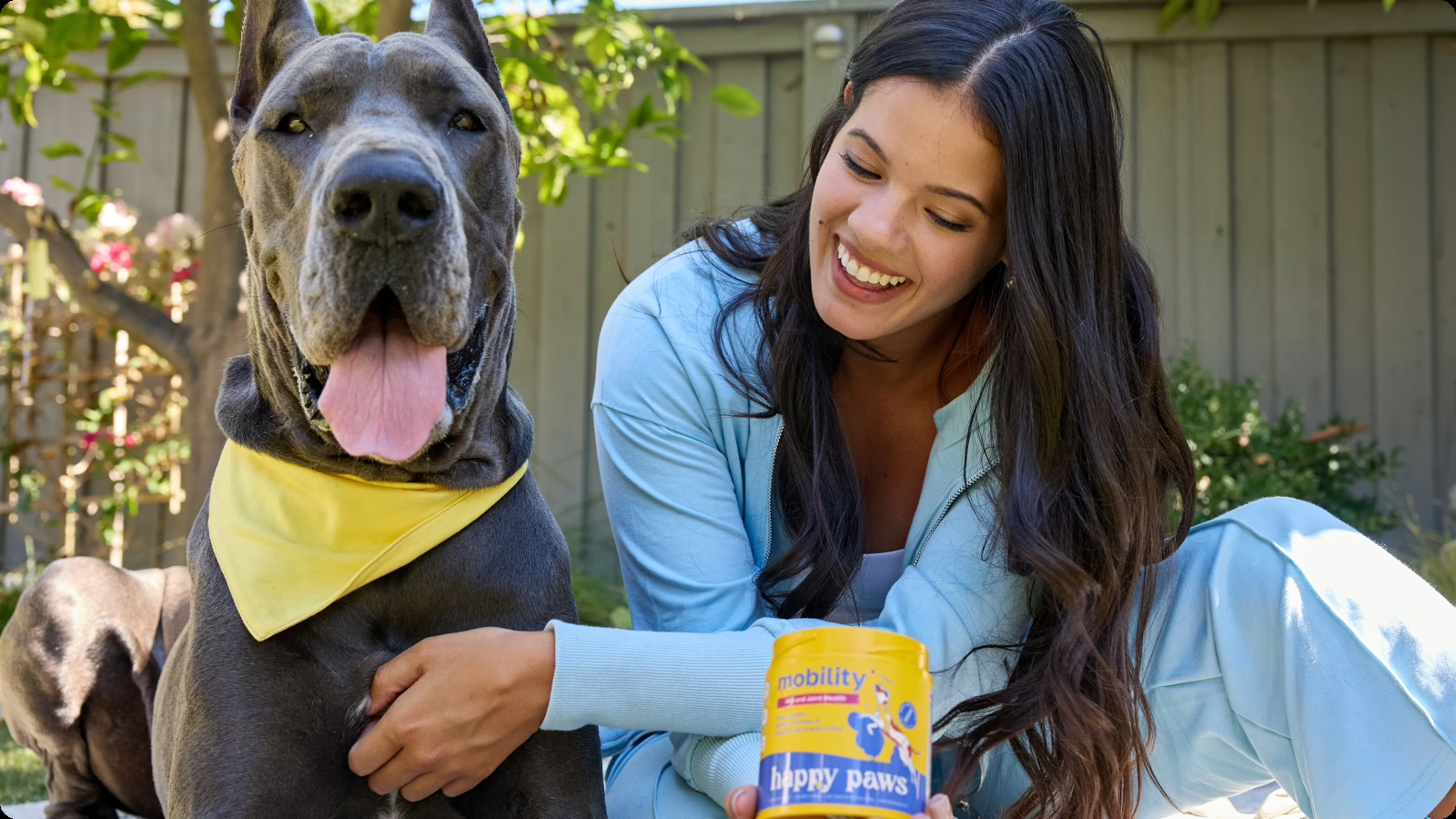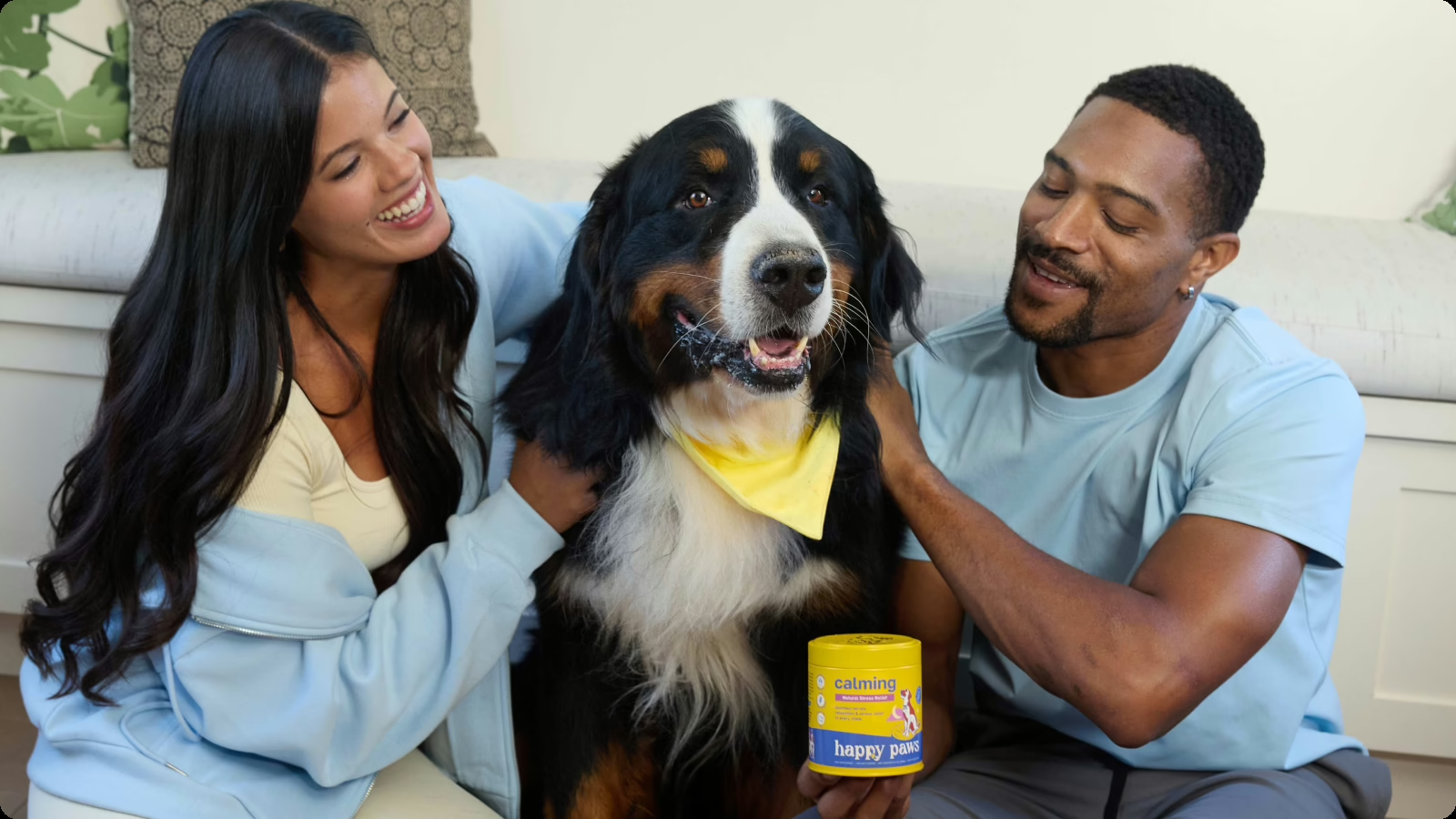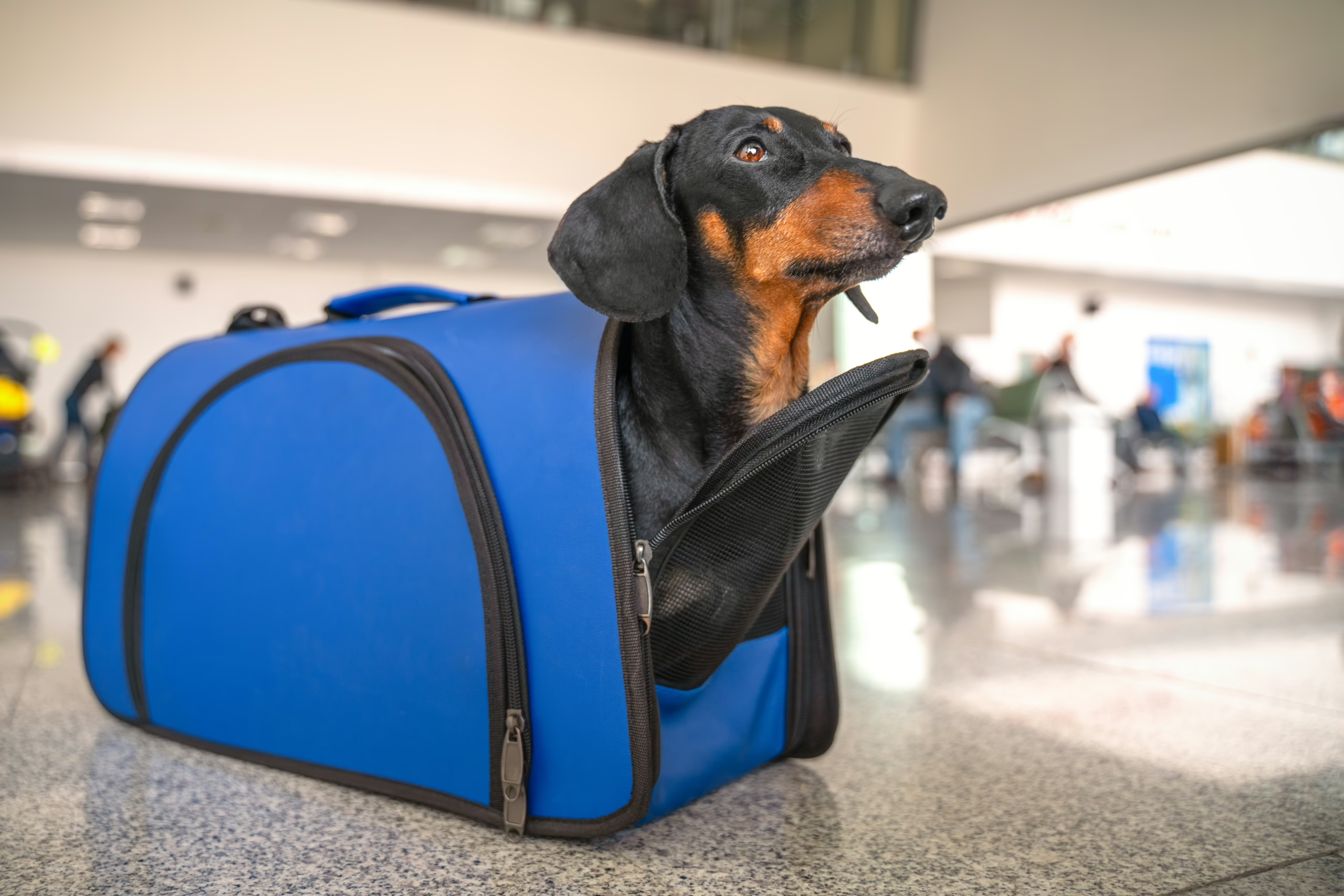To run, skip, jump, zoom, sit, and prance, your dog needs healthy, active joints and hips—and most dogs are born with healthy joints and hips. From puppyhood, your dog’s joints are nimble and agile, able to adjust at your dog’s whim. But these joints slowly wear down over time, leading to common problems, like osteoarthritis, weight gain, and behavior changes.
While it may be tough to see, joint pain in dogs is noticeable early on and gets more evident as the condition worsens. Most joint problems aren’t curable, but they are manageable, and we’ll show you how. In this guide, we’ll help you spot five early signs of joint pain in dogs, offer up a few ways to help, and clue you in on how dog joint supplements can complement your vet’s treatment. But first, we need to understand just why joint health is so vital for puppers of all ages.
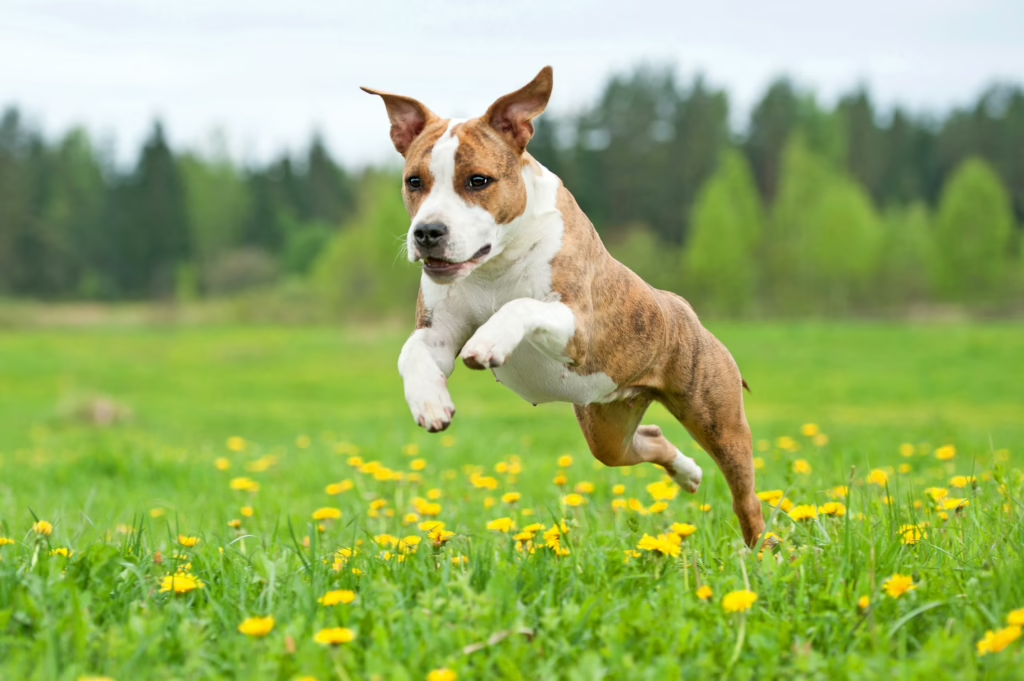
Why Joint Health Matters in Dogs
Your dog’s joint health is at the crux of their nose-to-tail wellness. Joint health plays a pivotal role in your dog’s movement and mood. When your dog’s joint health worsens, several other problems can arise.
Mobility
Movement is one of the few ways your dog expresses themselves. Whether they run to greet you at the door, zoom around after dinner, or paw you for one more pet (okay, fine, and another one), your dog uses movement to connect with the world around them. When they’re young, your dog’s movements are free and unrestrained. Your puppy may bolt for the door or from the ever-evil vacuum. They may barrel over the couch or stretch up to snag a treat from the table. Your puppy is using movement and mobility to learn and grow.
But over time, most dogs can experience tighter, stiffer joints, resulting in less movement, which means less mobility. If joint conditions worsen, your dog’s joint pain may keep them side-lined on the couch or bed.
Weight Control
For many dogs, weight gain happens with age. It’s normal for some dogs to get a few extra folds. But if your dog’s weight reaches a certain point, their joint health may be affected. When a dog adds weight, that extra fat gets stored near their midsection, right over their hips. With the added weight on their frame, dogs can experience more pressure on their hips and joints, leading to cartilage that wears down faster.
Your dog’s weight gain and joint health can have a cyclical relationship. Their joints may hurt, so they stop moving around as much, resulting in less exercise and weight gain. This weight gain can worsen joint pain, which limits your dog’s mobility even more, which can cause weight gain, which—you get the picture. Weight gain and joint health are closely tied to one another; that’s why it’s important to focus on weight control early in your dog’s life.
Stay Happy & Healthy
Just like with us, daily movement and exercise play a key role in your dog’s mood. Going outside to play helps your dog stretch their legs, flex their muscles, and get in all the daily sniffs. But if joint pain interferes with your dog’s daily movements, these other activities may get replaced with couch sits and lazy lounging, which may negatively affect your dog’s mood. Dogs with joint pain may be moody, tired, lethargic, and grumpy. We’ll point out more signs of joint pain below.
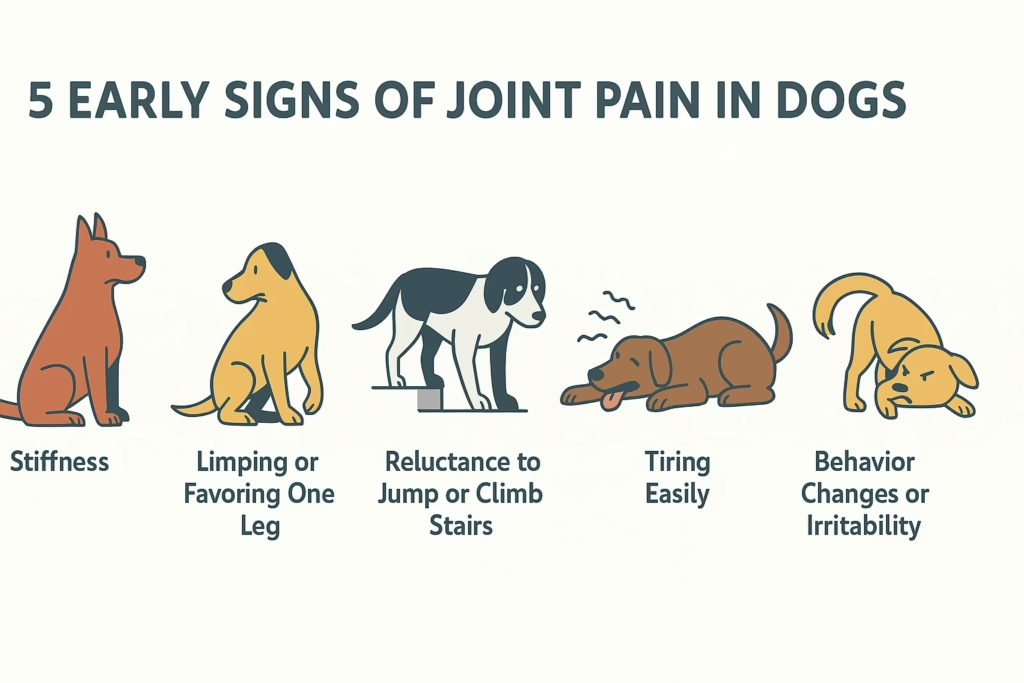
5 Early Signs of Joint Pain in Dogs
Here are five early signs of joint pain in dogs. If you notice one or several of these signs in your dog, it’s always best to consult a veterinarian.
1. Stiffness
Our first sign is stiffness, a common effect of osteoarthritis. Just like in humans, dogs can get osteoarthritis in their hips and joints—a condition that affects up to 80% of senior dogs. This condition occurs when the conjoining bones in a joint have worked through all the cartilage and padding, leaving the two bones to rub and twist against each other—a pretty painful experience. Your dog may be showing stiffness in their legs because their joints have lost the necessary cartilage to move and bend pain-free.
2. Limping or Favoring One Leg
Joint problems in dogs don’t affect all four legs equally. There may be one side that isn’t as worn down. So, your dog might favor that side and limp with the other. If your dog tends to favor one side or limp on a front or back leg, it’s always best to consult your veterinarian.
3. Reluctance to Jump or Climb Stairs
Walking up stairs requires all of your dog’s joints to work in sync. When their joint health isn’t up to snuff, your dog might be hesitant, slow, or even unwilling to walk up a flight of stairs.
4. Tiring Easily
When your dog has joint pain, they might still want to run, skip, jump, and fetch, but they’ll probably tire out quicker. Joint problems, like osteoarthritis, can zap more of your dog’s reservoir of energy, quickening their heart rate and speeding up their breathing. So, if your dog has joint problems, a few rounds of fetch might be all that’s needed for them to roll over, panting and exhausted.
5. Behavior Changes or Irritability
A dog’s joint pain may be persistent, always looming in the background as they stretch and lounge. Although it might be subtle, this pain can affect your dog’s mood. They may grow grumpy, lethargic, tired, and moody. Some dogs may even get a tad irritated when you graze over their pain points. So, behavior changes and sudden flashes of irritability may be evidence of underlying joint pain.
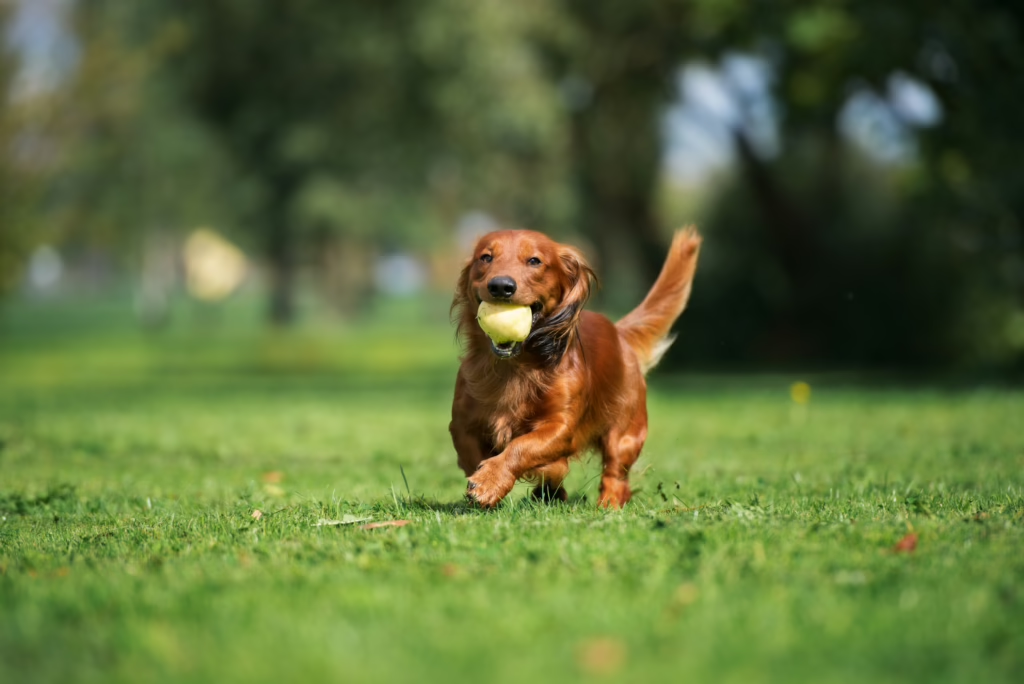
Ways to Help Dog Joint Pain
As we acknowledged above, joint pain isn’t always curable, but it can be manageable. Here are a few ways to help your pupper.
Routine Vet Visits
Vets are some of our best friends; they should be your dog’s, too! Routine vet visits can help you get an early jump on your dog’s joint problems. Veterinarians can help diagnose your dog’s unique condition and provide a plan for the necessary next steps. They can prescribe medications if necessary and offer up a list of curated treatments that best assess your dog’s circumstances.
Joint Supplements
A popular addition to veterinary intervention is joint supplements for dogs. These healthy, tasty treats carry an assortment of joint-friendly ingredients that can promote mobility. With ingredients like chondroitin and glucosamine, two compounds found naturally in your dog’s cartilage, these supplements can provide the necessary building blocks for better joint function.
Improve Diet
For many dogs, joint problems stem from a lack of nutrients or obesity. To address these mobility woes, many dog owners first adjust their dog’s diet, opting for healthy, natural, vitamin-rich, and nutrient-dense foods. If you need help addressing your dog’s diet, it’s always best to consult with a veterinary professional.
Slow, Consistent Exercise
For dogs with joint problems, and senior dogs in general, it’s best to focus on easy, daily exercises, like low-impact walks, swimming, and gentle playtime. Even in your dog’s golden years, you still want to take them on daily walks to help move their muscles and stretch their joints, but it’s best not to overdo it. Focus on consistency instead of intensity.
Spotlight on Mobility Dog Chews
As we mentioned above, joint supplements for dogs can be a wonderful addition to your dog’s mobility routine. Healthy treats, like our Mobility Dog Chews, use a formulated blend of ingredients to bolster your dog’s hip and joint health. Made with chondroitin, glucosamine, and green lipped mussels, these vegan chicken-flavored chews help soothe common mobility issues in dogs of all ages, sizes, and breeds. Just add them to your pup’s kibble or award it to them as a standalone treat; your dog will love the tasty, tail-waggin’ flavor!
Parting Thoughts
Although joint issues in dogs are common, they’re not always noticeable. Early signs like limping, stiffness, tiring easily, and behavioral changes may point to weakening joint health. However, these symptoms can be indicative of other conditions. So, it’s always important to consult a veterinarian if you notice these signs. They can point you in the right direction for optimal treatment and pain management.
